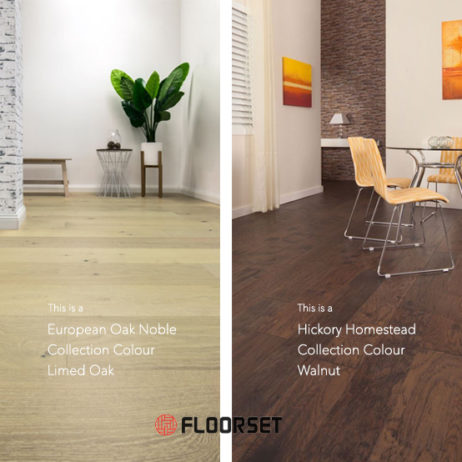
Few flooring options can match the popularity of wood flooring. Engineered timber brings the same stylish and timeless look of solid timber with a portion of the cost and added benefits. In this article, you will learn about European oak and American Hickory
European Oak, also known as French Oak or English Oak gets its name from medieval Europe. It’s a slow-growing species with extra hard timber. It has been used for centuries as the first choice for shipbuilding, furniture and of course, flooring. Beautiful natural grain, high tannin content, large blocks and wide floorboards are reminiscent of the grand floors found in the castles and palaces.
When you want to combine superiority of both “Oak” and “Engineered” flooring, Oak Engineered Timber comes into the scene. It offers a very hard-wearing surface, an astonishing look, surprisingly rich grains along with that desired wide plank that the architects and interior designers recommend.
When it comes to flooring engineered oak, flooring is one of the most promising options. Here is why:
Oak is a highly dense timber, making it strong and durable. This offers great longevity when you choose it for flooring. And it is the best option for high-traffic rooms such as a living room or entry hall. Like oak hardwood, engineered timber will last over generations and you will get all benefits of genuine oak with the top hardwood layer.
Engineered oak is not only hard-wearing but also offers a stunning look and pattern that is second to none. Oak timber has a very desirable grain pattern that is not comparable with other hardwood species. This is mainly due to the slow-growing cycle which allows producing a tighter grain. The grain pattern in each is slightly different depending on the way it has been cut from the log. So, no two pieces of timber have exactly the same knots and flaws. This adds to the value and beauty of the flooring. With engineered oak, you will have the same astonishing look without having to compromise on appearance.
The special engineering techniques used in building engineered oak make it less prone to wrapping due to moisture and temperature changes. This strong construction makes engineered oak a perfect suggestion for Australian conditions.
Not only is engineered oak eye-catching, versatile and flexible, but it’s also available in wider planks than solid timber. This gives you the flexibility in choosing timber for your room and the final flooring will look more appealing. The multi-layer structure of the engineered flooring gives it the ability to withstand wrapping and other temperature and moisture-related issues. Therefore, they can be manufactured in wider planks compared to their solid timber counterparts.
If you looking for a beautiful but sustainable flooring option, engineered oak is the best solution for you. Compared to the solid less slow-growing oak is used for the construction of the engineered oak. Most of the floorboard is made from plywood which is usually sourced in regenerating plantation forests. So, by buying engineered oak you can make sure that you will achieve the same look and lifetime while being friendlier to the planet than the solid oak.
Engineered oak installation is fast and hassle-free. As a floating flooring, it’s installed quickly and without pain. All you need is the flat and sound subflooring. This makes engineered oak the best candidate for DIY jobs.
Hickory is a common type of wood found across the United States. It’s among the hardest and most durable timber for flooring planks. The engineered Hickory top layer or veneer layer is made of real wood. Other layers are built from compressed plywood glued together in different directions to form a strong core. Thus, engineered hickory flooring is less likely to expand and contract under moisture and temperature fluctuations.
The advantages of engineered American Hickory planks include: